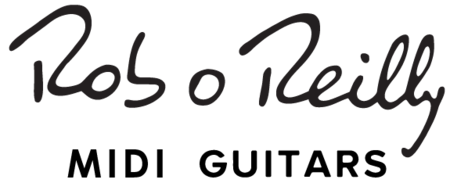
Intro
The SynthAxe is a fretted guitar-like MIDI controller that uses electronic synthesizers to produce sound.
The SynthAxe itself has no internal sound source. It is purely a controller and needs synthesizers to produce sound. There are two independent sets of strings. One set on the fretboard and another set for picking.
Who Used It?
Allan Holdsworth, the phenomenally talented Fusion Jazz guitar player, was the most prominent user of the Synth Axe. He used it for both live performance and extensively on his 1986 album Atavachron and his 1987 album Sand.
Michael Jacksons Bad tour famously featured Christopher Currell performing with a Synth Axe. Chris used it to control sounds on the Synclavier which was an early digital synthesizer, polyphonic digital sampling system and music workstation.

Chuck Hammer who worked with artists like David Bowie, Lou Reed and Lee Ritenour used the SynthAze on his album Earth Run. The SynthAxe famously featured on the front cover of the album.

Jimmy Page said in an 1986 interview with Steve Rosen: "I went with Tim [Marten, guitar tech] to a demonstration of the SynthAxe and it was just absolutely terrifying. It was great, it was fantastic. I was so impressed with the demonstration of the SynthAxe that it’s difficult to even see what faults it might have. You need to have one to know."
When was it created?
The synth axe was created by Bill Aitken, Mike Dixon, and Tony Sedivy in 1985. The system was developed as a joint venture funded by Richard Branson's Virgin Group.
How does it work
The fretboard is continuously scanned and sends signals to accurately detect which notes are playing. The string set on the fretboard determine the pitch played, through contact with the frets on the neck and by sensing the side-to-side bending of the string. The body set of strings are velocity sensitive; these strings can be plucked, strummed or damped in the same manner as a guitar. A keyboard made up of nine keys can also be used to trigger notes instead of the strings.
An electronic whammy bar can be used for pitch bend or can be redefined to produce different MIDI output such as filter cut-off and volume.
The synthaxe tracked the notes extremely quickly and accurately. However, at a cost of $13,000, it was far from a mainstream instrument. Fewer than 100 instruments were built before production stopped around 1988.
Where was it made
The synth axe was produced in England.
The Verdict!
The Synth Axe was an phenomenal leap to the synthesizer guitar world. Although a commercial failure, it is still considered a high-performance musical tool and is desired by world class musicians even today!
